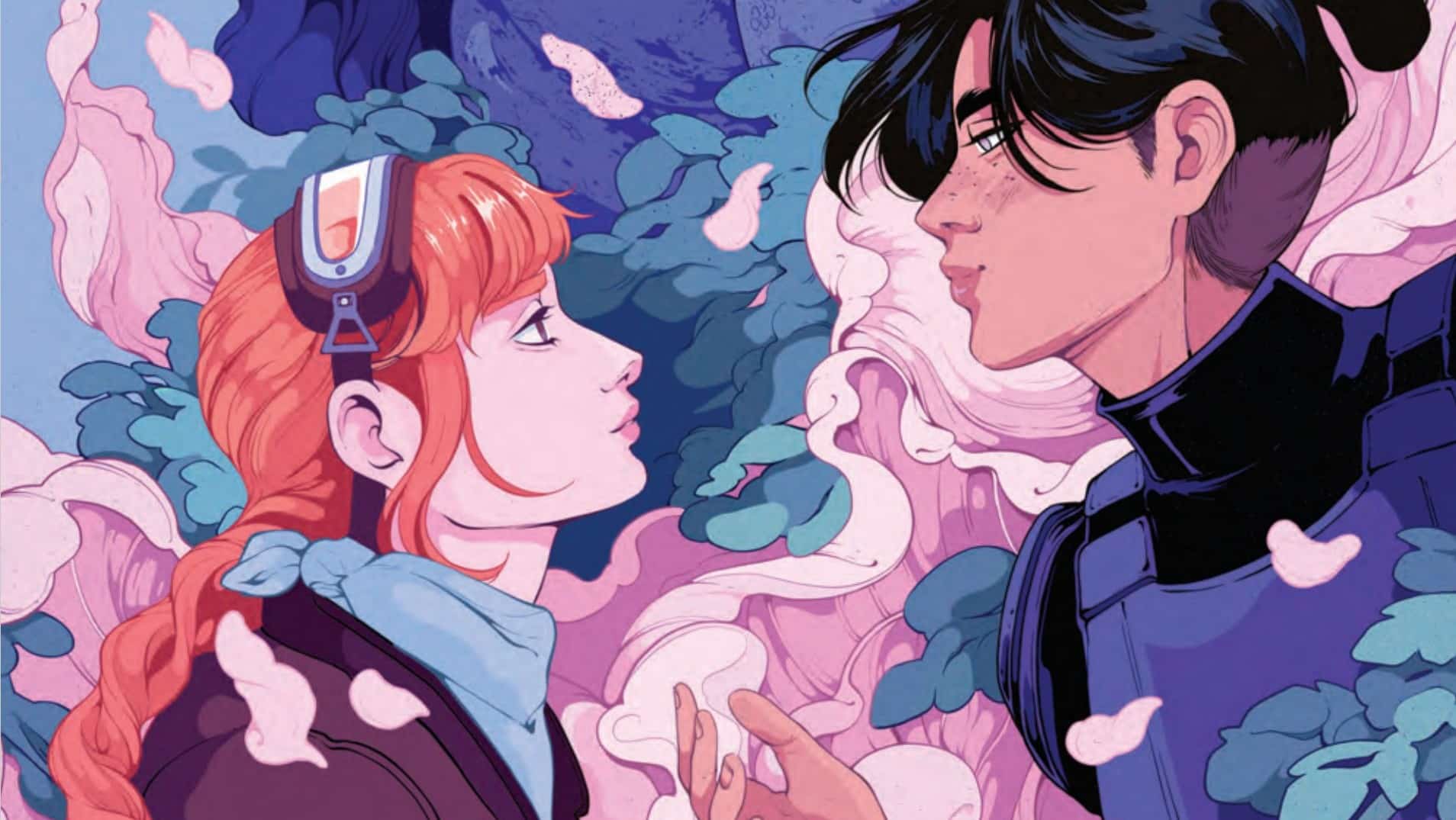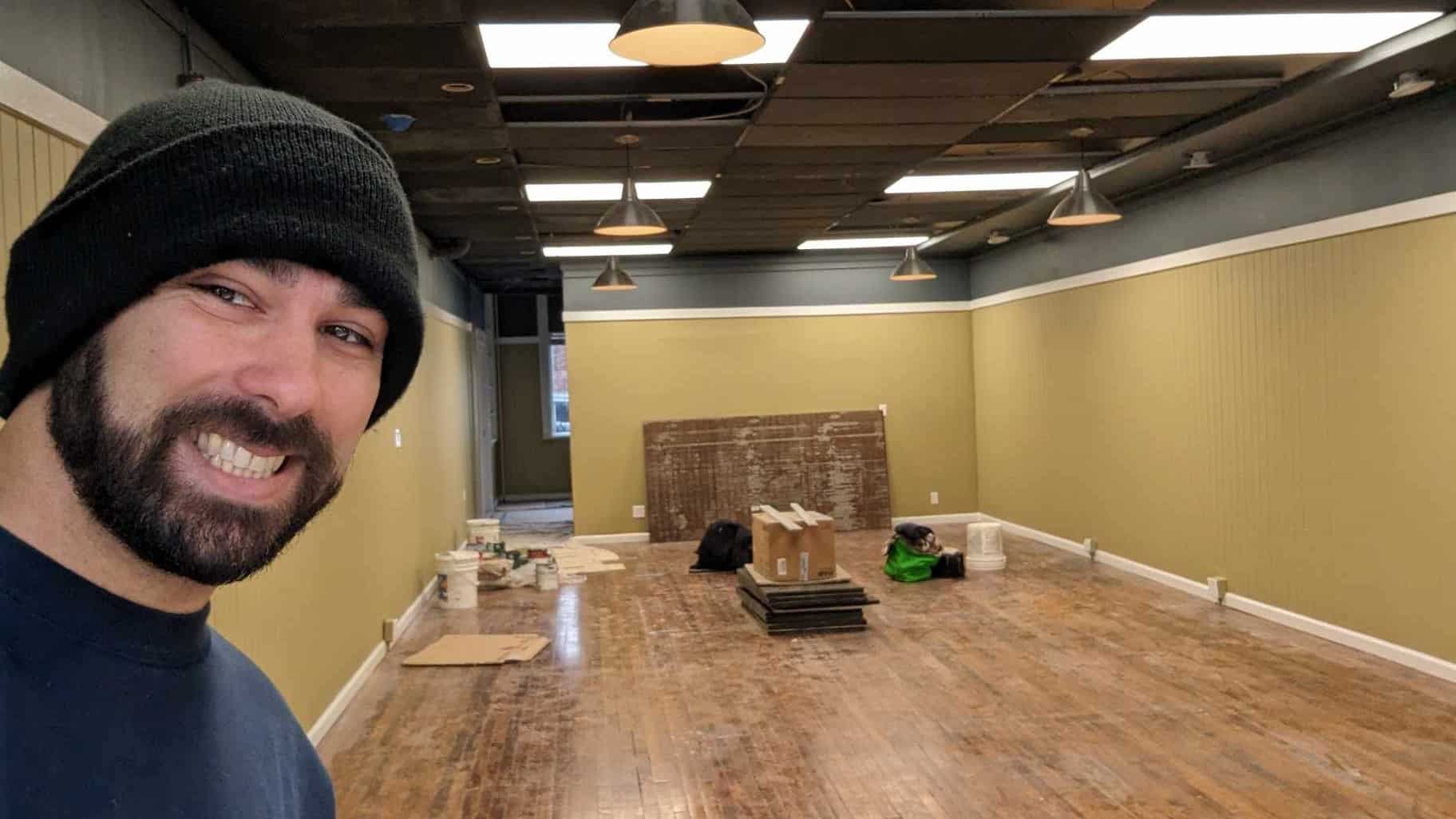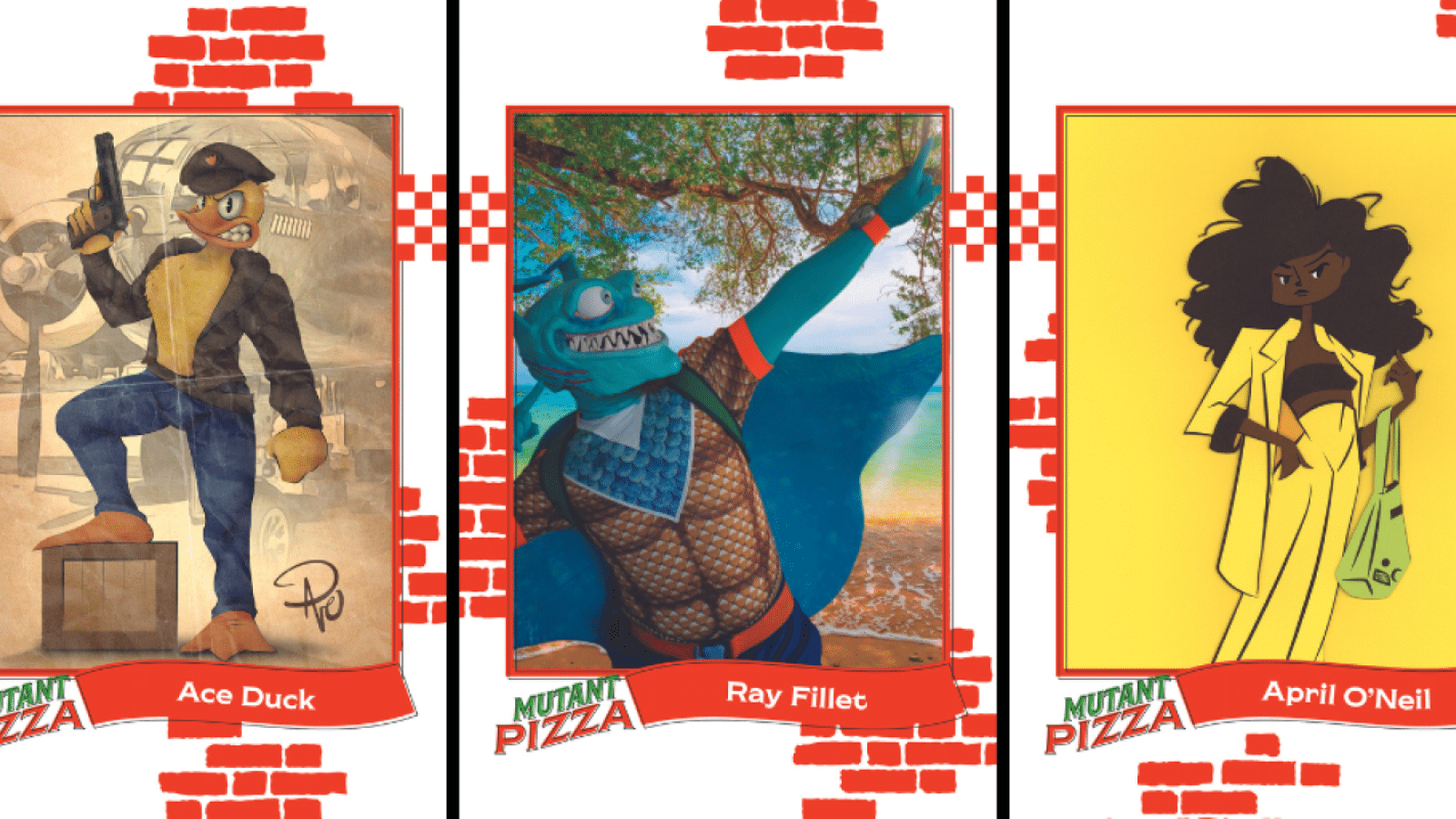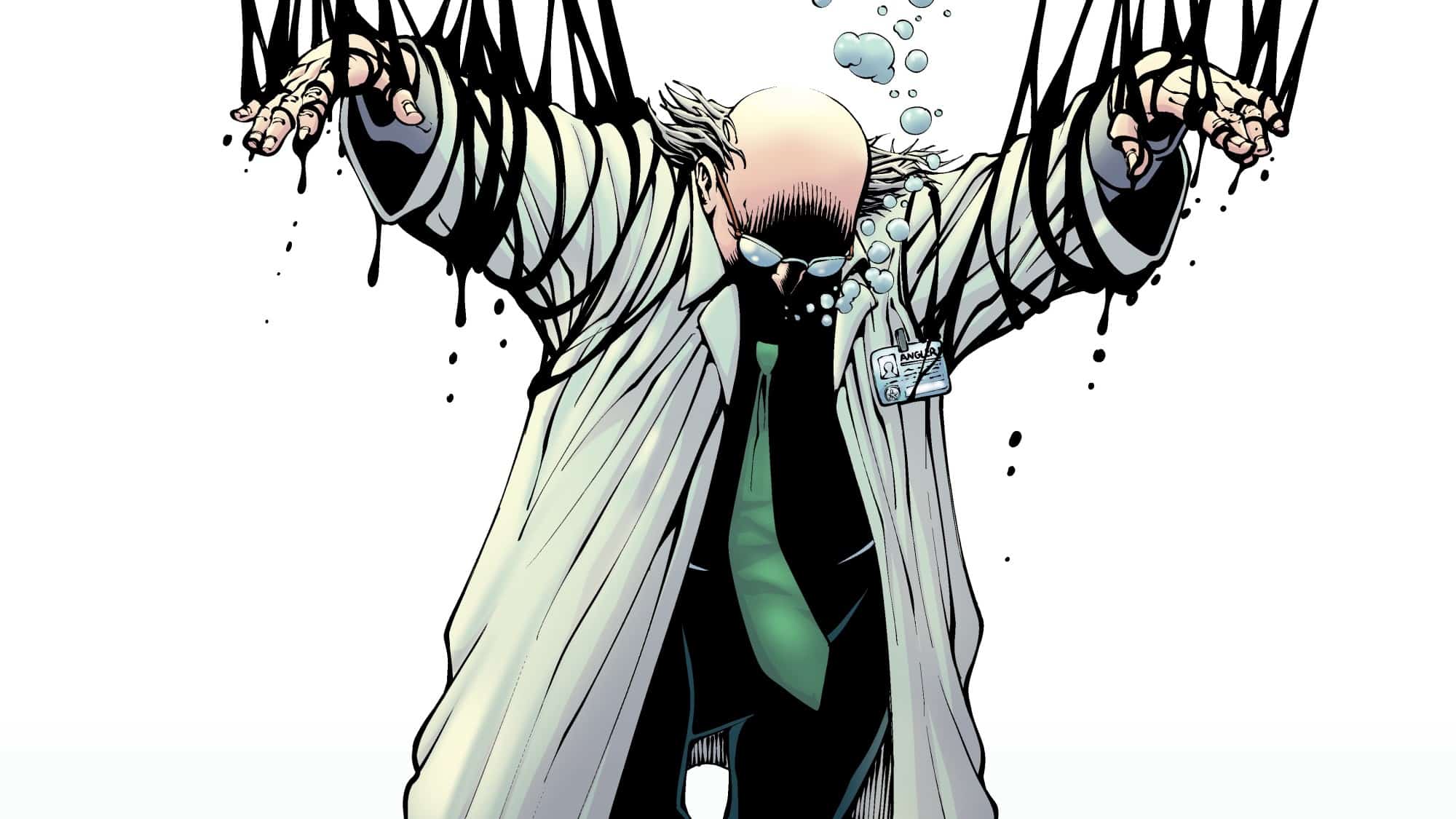Few comics have captured as wide an audience as Jeff Smith’s all-ages fantasy epic Bone. This week, Smith launched a Kickstarter for the first two graphic novels in his new series: Tuki: Fight for Fire and Tuki: Fight for Family. I sat down over Zoom with Smith to talk about Tuki, Bone, the process of creating these books and his preferred fantastical vacation spots, plus a lot more. This conversation has been edited for length and clarity.
Matt Lazorwitz: Jeff, thanks for sitting down with us. It’s an honor to talk to the man who wrote the book that got my niece in trouble for reading it after she was supposed to go to bed.
Jeff Smith: Thank you, it’s great to be here. Thanks, Matt.
ML: We’re here to talk about the Kickstarter campaign you’re launching today as of the recording of this interview. What can you tell our readers about Tuki?
JS: Well, Tuki is a story that takes place 2 million years ago. And the reason I picked that time period was that there were so many things happening at that moment in our species’ history. There were more than one kind of humans alive at the same time. Our ancestors discovered fire 2 million years ago, and I just thought all these things happening at the same time was just too much crossroads. There’s too much to miss. I have to write a story about it.
So the story of Tuki himself; he’s this fellow, he’s a mysterious wanderer who kind of stumbles into the territory of a rival human species, and in that territory he actually finds some lost children of his species and together they form a little band. They are searching for the Motherherd of All Buffalo, and they go further and further north into this dangerous rival species territory, but this other species, called the Habiline, they hunt and kill anyone that uses fire. And that’s the situation; that’s the story. So not only are the Habiline warriors looking for Tuki and these kids, but gods and giants are also. Because it’s me, it’s a fantasy. It’s a good story.
ML: Content/reading level-wise, is Tuki more in line with Bone or your more mature — and I use that term loosely as Bone explores a lot of heady themes — RASL?
JS: I would say it’s closer to Bone. I mean it’s not exactly … Bone became this worldwide, all-ages, as-young-as-you-want type of a book, and I never foresaw that.
I just wrote Bone for other people that read comic books basically, probably, y’know, someone who would understand, who would get not only Carl Barks and Uncle Scrooge, but Chuck Jones and Bugs Bunny. That’s who I was writing it for, and I always thought, “I imagine that this Bone and Tuki would be something that could be read in the daily paper, especially of the ’30s and ’40s, during that heyday of Flash Gordon, Dick Tracy and Prince Valiant.
So I never really think about age level or comprehension. I’m definitely writing on an intelligent level. However, I don’t think there’s anything in comics that a little kid wouldn’t go, “I don’t know that word. I’m going to go look it up in a dictionary.” That’s the magic. It’s one of the magics of comic books. Little kids will go: I want to understand this. I want to learn to read. I want to understand this, and I’m going to go look it up and I love that about that. And it’s a heavy memory for me in my early days of reading comics.

ML: What were some of your favorite comics early on? I always felt there was a touch of Pogo and Walt Kelly in Bone as well.
JS: I was a big fan of Pogo by Walt Kelly, but even earlier than that when I was very young, I liked Peanuts, Charles Schulz. I absolutely adore that. In fact, I taught myself to read kind of like I was just saying I taught myself to read with the Peanuts collections. My dad used to read Peanuts to me on Sundays, but, you know, during the week he wasn’t there. I had to read it myself to find out what’s going on with Snoopy, what’s going on with Charlie Brown.
I love those strips, but I think something began to change when I got into comic books. At age like 9 or 10, I was a big fan of Joe Kubert and Neal Adams. And these are two guys who even to this day, I can go back and look at their work and still learn and get excited and inspired because they would tell much longer sequential stories and they were very good at keeping you in the moment and moving, and that was something that I try to replicate quite a bit. So yeah, those are probably the big ones.
ML: Tuki is on Kickstarter. What is it about the Kickstarter model that spoke to you? As someone who self-published his previous works, do you see Kickstarter as coming in as a replacement for, or something to supplement, traditional self-publishing?
JS: It might be traditional self-publishing now. Well, you asked me two different questions. The first question is why, and the why was … I don’t know. I don’t know why I waited so long. I’ve been self-publishing obviously for 30 years, but it was because a couple of friends of mine from the old self-publishing days, the Tuccis and the Pulidos; they did Lady Death and Shi comics and we used to run around all in the same circles because we’re all self-publishing and they said, “This Kickstarter thing, you’ve gotta check it out.” So we did. And it looks like a very viable thing. So, because of my friends encouraging me, I went for it at.
Now, as for today versus then, well, when I was self-publishing in the ’90s, there were like 11 different distributors. Now, there’s just Diamond. So there were 11 monthly catalogs which came out every month, and I’m sure that was a pain for the retailers, but for self- publishers, if one distributor did not want to carry you, there was definitely others that would. That option has gone away. There are real gatekeepers standing guard. So Kickstarter’s a way to get around the gatekeepers, and I think it’s important. At the very least, publicity and marketing, that all really works for this. You’re talking directly down to people who are really going to buy your book. You don’t have to convince a third or even a fourth person to trust that buyers are going to buy your work. These are really people buying your work.
Although I would like to stress that just because someone — and I’m not talking about just me but I think all self-publishers — just because they want to avoid gatekeepers doesn’t mean they don’t want to be on the shelves of bookstores or comic book stores. They do very much, but Kickstarter allows you to prove yourself. It’s a proving ground a little bit to show the world that this product is viable, and I think when we finally emerge out of lockdown, and we can go back to comic book shows — because comic book shows are so important to the energy and life blood of our art form where creators and readers and retailers and comics journalists all can get together — I think it’s going to be better, I guess is what I’m saying. And there will be a way to figure out how to get Kickstarter people into comic book stores, and comic book stores can participate and make some money off of these good books.
Because another big difference between now and back in the ’90s is that there’s so many talented people doing comics now. I mean it’s off the hook, off the chain that made the people. I mean there are people who can draw so much better than I could when I started. And the packages they’re putting out? The coloring is so sophisticated. It’s really amazing. Anybody that can’t find a comic book that is either to their taste or that will blow their mind just isn’t looking.

ML: RASL, your last long-form self-published piece, was filled with research: research about the great Nikola Tesla, research about the science and all the craziness there. Did you do a deep dive into early humans and that period for Tuki, or is it more just you relishing in the fantasy of 2 million years ago?
JS: No, I did a deep dive. It is a fantasy in the sense that some of their spiritual beliefs are real, but no, there’s no dinosaurs. The dinosaurs have been dead for 60 million years at this point. And yet this is still a story about the ancestors of our earliest ancestors. But most of the milieu is real, and that is the foundation that the fantasies built on. Yeah, I went deep on this for about five years of just really reading and finding out.
I don’t know, I’ve talked about this only a couple times in other interviews, and I can’t tell if this is a good thing to talk about or not. But for example, we know another thing that happened 2 million years ago at this crux point in history, we lost our body hair, and the reason we know that is because lice. There were some lice for down there, and then all of a sudden 2 million years ago, there’s different lice for up here because there was this big expanse of no hair for them to travel. So we know because we could study the DNA of lice and see when genetically these two family members split off.
It was crucial for me. This is when we became us. This is when we started to transform from our more hominid cousins. We began to lose our gut; we were eating cooked foods, which takes a lot less real estate in your intestines. So we became sleeker. We lost our hair. I mean it was important to me that I was accurately portraying this moment in time but then allowing, I don’t know … it was like, Miyazaki kind of imagination to help explain this moment.

ML: I remember that some early Tuki issues came out in comic shops as Tuki Saves the Humans after the initial webcomic release. Those were traditional comic shape and size, correct; they were portrait, not landscape?
JS: Yes, but my webcomics were landscape, which caused me a little bit of a problem.
ML: Which is exactly what I was kind of curious about, because that was portrait and the web strips were landscape. So now you’ve gone back; the new graphic novels through Kickstarter are going to be landscape again. When you converted them, did you have to add transition panels, or did you just have to play cut-and-paste? And I assume those early strips are part of Vol. 1; that wasn’t beta testing stuff that isn’t in the new books, or was it?
JS: Those are all great questions, and the answer is yes and no to everything.
The comics that ran in like early 2016, I think, was the last one because it ran for about two years. The webcomic was sort of an experiment on my part. I wanted to dip my toe into the world of webcomics. I thought that was interesting. I mentioned how much I liked Prince Valiant and Flash Gordon and that kind of Sunday page; I loved that. So I thought, well, I’ll do Tuki as a Sunday page and about once a week, I’ll put up a Sunday page.
Well, I collected them after that, at the end of the two years into four comic books, and the problem was twofold. One, I had done them landscape. So what I did is I turned them on their side so that you had to read the comic book sort of like a calendar or something, and some people hated that, some people loved it, but that wasn’t my real problem. My real problem with the entire experiment was that the Sunday page thing that I did, this one page a week, which kind of was self-contained in a way — to be continued just like Flash Gordon? When you put them together, they didn’t read smoothly. They didn’t create the kind of energy that brings a comic to life, at least not enough to satisfy me.
So once I saw the comics in print, I went, “OK, I need to stop and think about this.” Also, there’s these little kids that kind of come into the story and they’re important to the story, but I hadn’t dealt with them until they showed up. And once they did show up, I went, all of a sudden, “Oh, this is a story about family, and I need to go back and start over from scratch.” So yes, some of the artwork and the basic story is the same and some of the artwork was able to be repurposed, but almost every word balloon has been rewritten. Many, many pages have been added in and between. Panels have been moved and stuff added to it.
It was quite a complicated process. It took me … I started working on it in 2019, but really when lockdown happened in 2020. I really sat down and literally finished the book. I not only finished the first book, which is Tuki: Fight for Fire. I finished the second book called Tuki: Fight for Family, and that book is almost complete. So this campaign on Kickstarter that I’m doing is actually for two new original graphic novels. It was a complicated process, though, so it was a complicated answer, I’m sorry.

ML: No, I’m a sucker for process, and I think a lot of our readers are, so this is the kind of thing that is fascinating. And so book one is done and book two is coming. They’ll ship separately. I assume?
JS: They will. Book one will ship in July 2021, which is 30 years to the month when Bone #1 shipped. So we’re celebrating the 30th birthday of Bone this month. And No. 2 will ship in October. And if supporters want, they have the option to only pay for shipping once and they can have them all shipped in October if they want.
ML: Another change is that initially the webcomics were in color and these books are going to be black and white. What kind of reasoning was there for that shift?
JS: Since it sat idle for a few years, for many reasons, some of which I talked about the story I needed to readdress but also I was co-founding a comics festival, CXC in Columbus with Thomas Spurgeon, Vijaya (Smith’s wife, Vijaya Iyer) and Lucy Shelton Caswell, and that took a lot of time. So it was sitting there for a while and I got to think about it a lot and I decided, you know what? I’m going to do this as a graphic novel. I’m going to self-publish it, and in the tradition of Bone and RASL, which were both self-published in black and white, I’m going to do it in black and white.
And I’m glad. It looks good in black and white! I was surprised; I hadn’t seen it in black and white since I drew the stuff, so it actually holds up pretty well in black and white.
ML: You did just mention that we are at the 30th anniversary of Bone, and I have to ask: Do you feel like you have any more stories to tell with Bone and that world, or at this point or barring a lightning bolt of inspiration, have you told the tale there in its entirety that you want to tell?
JS: Yes. Bone was a single story. It’s divided up, sometimes, into nine volumes, but it’s a single story. It had a beginning and a middle and an end, and it’s finished.
However, I love those characters. They’re so part of me, it’s so important to me that I still come up with reasons to draw them. But it’s not in a way of here’s Bone II, you know what I mean? I do little things. In fact, we’re going to do a new book with Graphix called Bone: Tall Tales II which are little tales, you know, little short stories that may have happened kind of in the margins of the main story and stuff. So they’re excuses for me to draw them again because I don’t ever not want to draw them again. But definitely the story is done and I don’t think the Bones will be going back to The Valley.
ML: When I mentioned to someone I was doing this interview, they addressed you as “living legend Jeff Smith.” I’m not going to put you on the spot and ask you what it feels like to be a living legend. But was there a moment when something happened and it occurred to you that you’d felt like you’d made it? Or are you still every day just sort of plugging along and you’re still just an artist doing his thing and working his craft?
JS: Mostly that second thing. I mean, there’s not a cartoonist friend of mine that doesn’t feel like he’s still starting out and that the current project is never going to live up to the last project. “It’s over,” you think that the whole time.
On the other hand, really, there were moments where I had these really high levels of, oh my God, this is … something’s happening. This is happening. Probably my favorite one was somewhere in, like, ’94, I think when Bone was really, really starting to catch fire. It got nominated for a bunch of awards at the Eisners at San Diego Comic-Con International, and the funny part was, I was a guest of the show, Bone really had some heat on it, but nobody knew who I was, nobody knew what I looked like. The few people I saw were surprised that I wasn’t … they thought I was going to be a little old man or something. They did not know how I was going to look like a surfer bum.
So, as the ceremony was beginning, my wife, Vijaya, was with me, and I got up to go to the little service area in the corner of the room, where you get a little glass of wine or something. So I went over to get us a glass of wine and I was in line and the show started, because there’s a big line, of course. And they start introducing the other guests of the show. So they’re starting to name people off, those people would stand up and everybody would applaud, and I’m getting closer and closer to the wine, and all of a sudden I hear them say my name. And there’s nothing, there’s no sound or anything, right? I turn around and look and everybody’s looking around because people don’t know what I look like. I heard a voice in the audience — it was a huge crowd, too, like 5,000 people or something — I hear a voice go, “He’s over at the bar!” and the guy just handed me my wine, right? And I turned around to the audience and everybody looked at me right then. The whole room, 5,000 people who hadn’t seen me before. And so I raise my wine, and the whole room, this roar, came at me and I was like, “Oh my God, that’s the best thing. That is the best thing that ever happened.”

ML: We’re going to end on a lighter question: If you could take a vacation in either Boneville and the Valley, drifting between worlds like RASL, or in Tuki’s prehistoric world, which would you choose?
JS: Wow, that’s a really good question. I want to be in all of them. I’m probably going to say Tuki because I am living there right now. I am living in 2 million B.C., and it is awesome, but you gotta be on your toes and everything every minute. And I’m trying to make sure I can include everything. Like, one thing I haven’t gotten in the books yet is that you have to just make sure when you sleep at night there aren’t snakes or anything, you know, poisonous spiders, whatever you got. I haven’t got that part in, but I’ve got a lot of other kind of immediate dangers. I’ll get there, I’ll get there. I’m hoping that the thing would be six books all together. And this Kickstarter is two of them. And you mentioned you like process earlier. We’re going to put process in it. We’ve already hit our stretch goals for a couple of things. And that’s one of them; there will be process in the backs of the books.
You can back Tuki Vols. 1 & 2 on Kickstarter and follow Jeff’s work at boneville.com.
Matt Lazorwitz read his first comic at the age of five. It was Who's Who in the DC Universe #2, featuring characters whose names begin with B, which explains so much about his Batman obsession. He writes about comics he loves, and co-hosts the creator interview podcast WMQ&A with Dan Grote.






